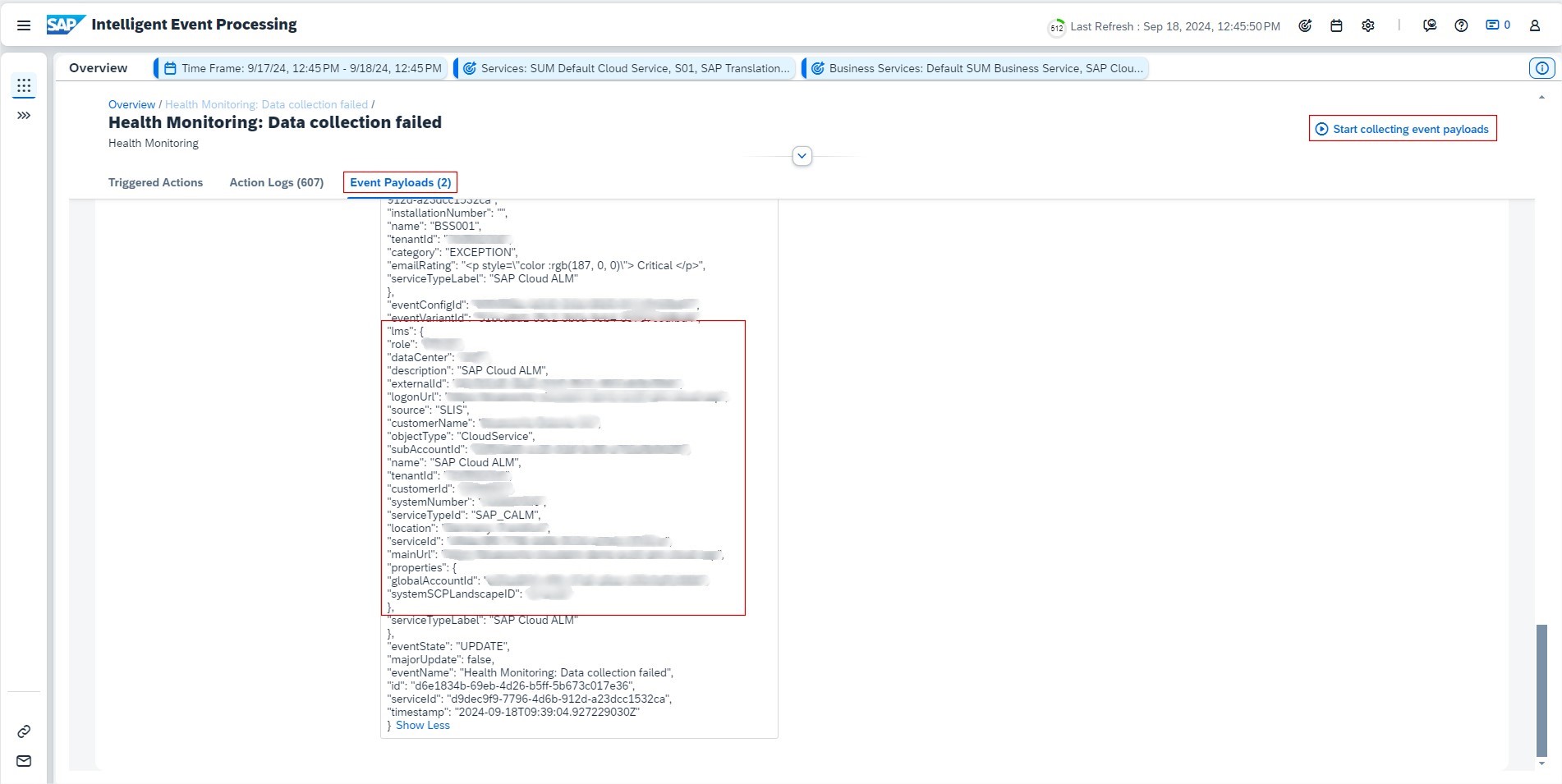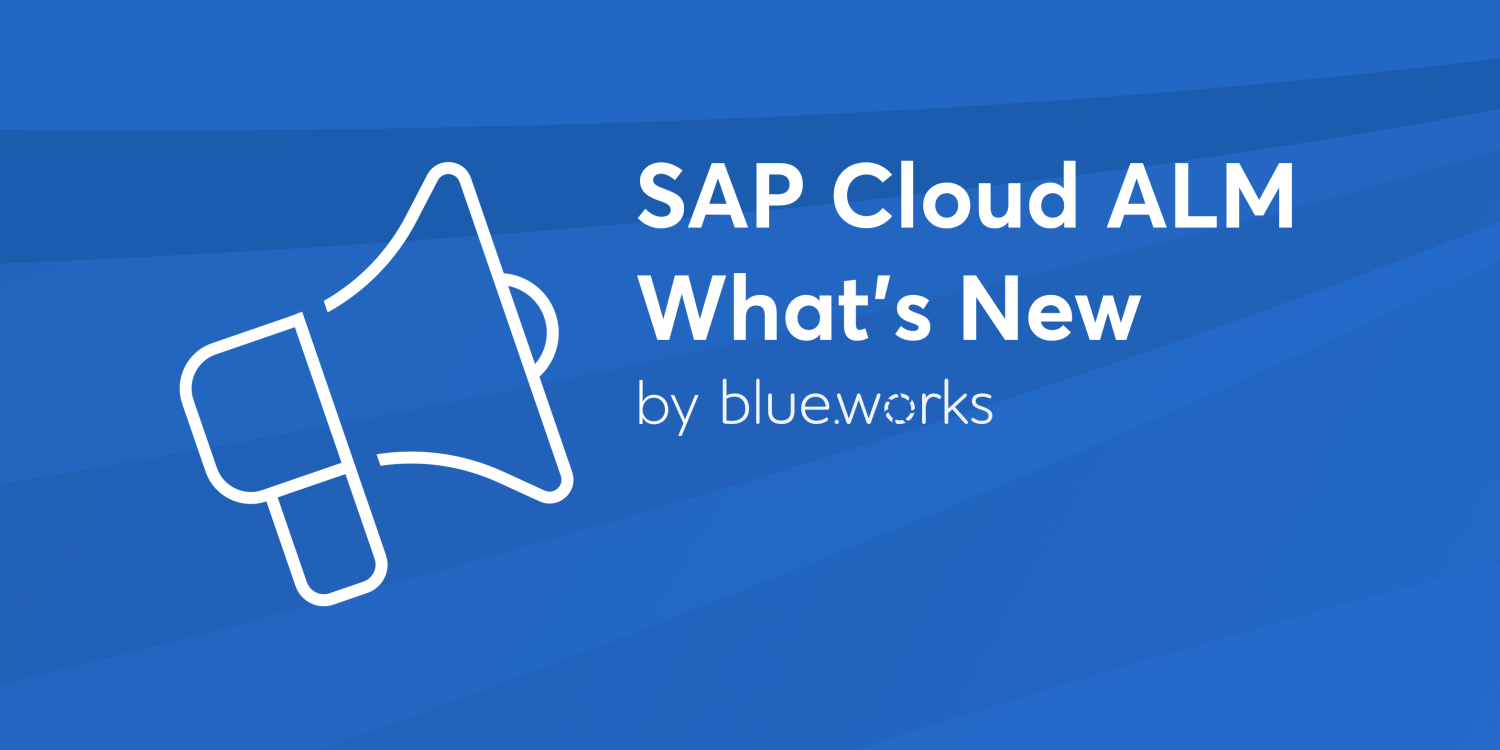
SAP Cloud ALM – What’s New in Week 38
Welcome to our bi-weekly SAP Cloud ALM update series! Every two weeks, SAP introduces a fresh batch of enhancements to Cloud ALM, ensuring users benefit from the latest features, performance enhancements, and user interface refinements. In this edition, we’ll explore the most recent updates rolled out in week 38. If you missed our article on the latest updates, you can read it here.
Services
Issues and Actions Management is now displayed in the translated languages. To switch between the available languages, click on the English (Original) button. If the content is available in login language, the issues and actions opens also in login language.
Implementation
Analytics has this time 2 new updates.
As sometimes unexpected things can occur, the new Quality Gate Reporting app that was planned for Week 36, will be available with this week’s updates.
Quality Gate Reporting app helps to monitor quality gates and their associated checklist items according to user type distribution and keep track of follow-up tasks.

Solution Process Traceability app got new function of showing indirect assignments for features.
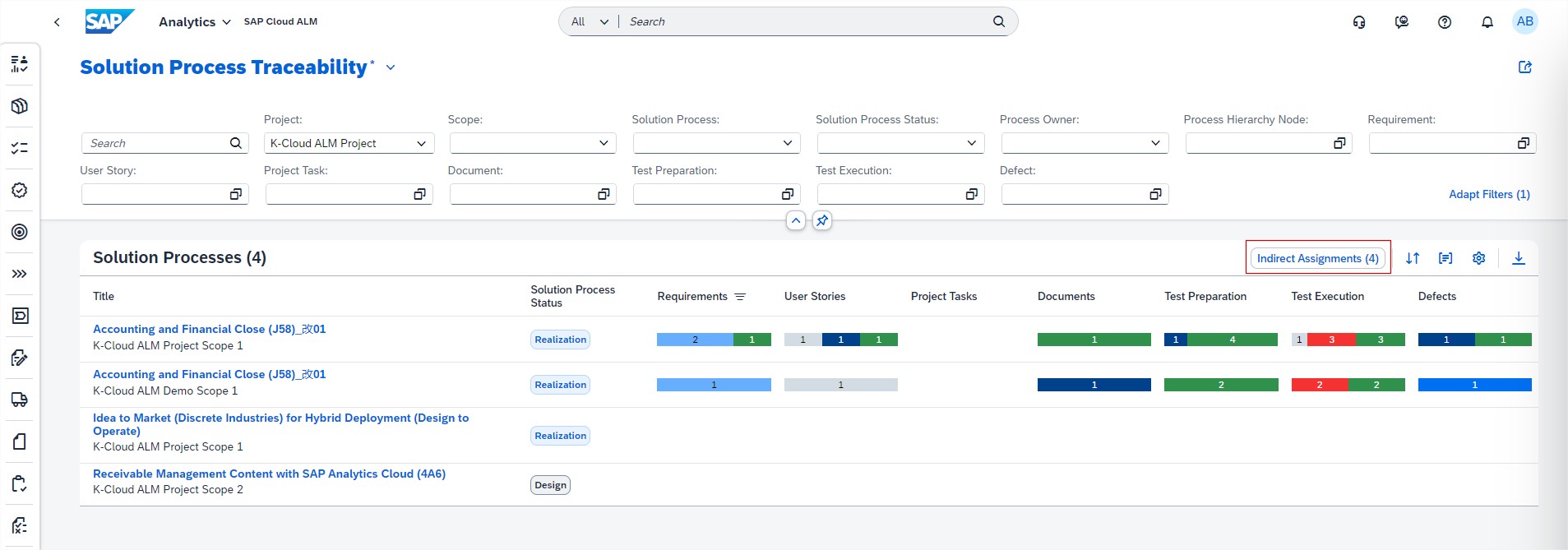
Cross-Project Overview has also a new application Transport Analysis. The app is located within the Cross-Project Overview tile. It gives an overview of all system transports and it’s possible to search for transports and check which feature they are assigned to.

Processes has introduced a new Mass Edit button and checkboxes displayed to the left of the list of solution processes allowing mass maintenance. Function allows to set the same status for multiple rows at the same time or set the scope state (In Scope or Out of Scope) for multiple items when in Edit Scope mode.
The checkbox at the very top of the list allows to select all solution processes in the list if needed.
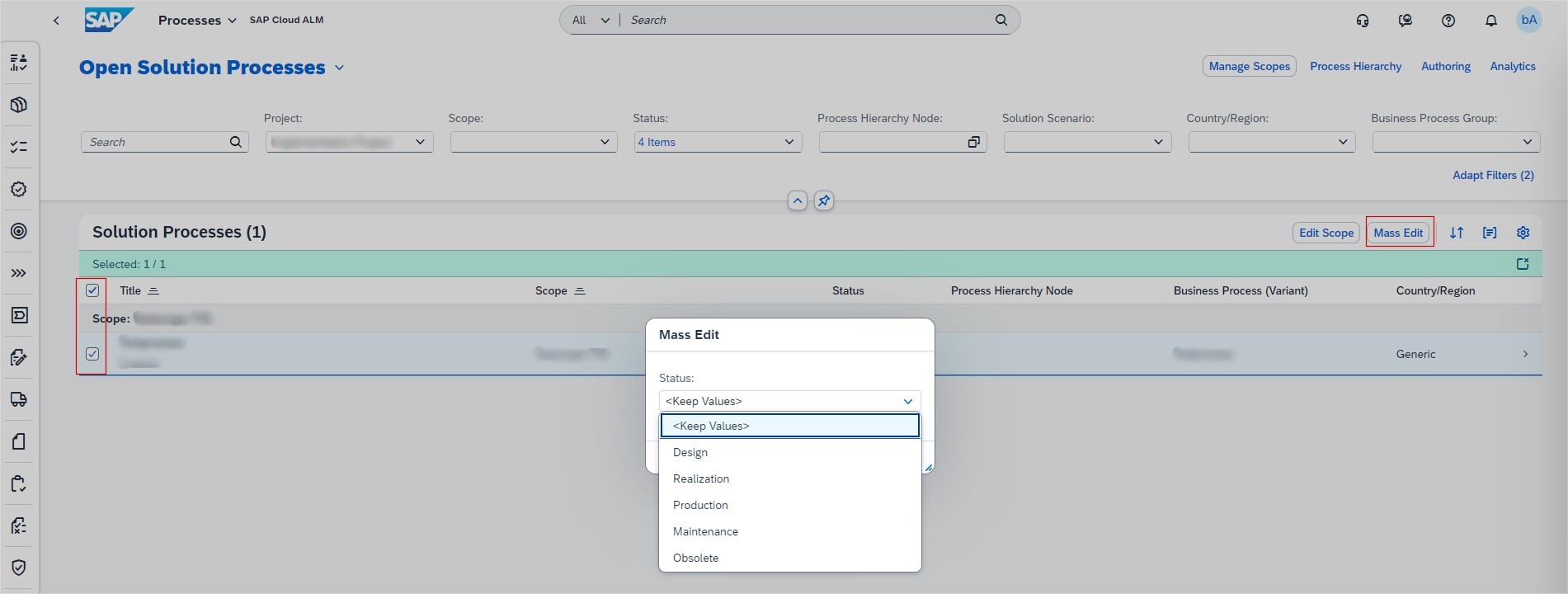
If changing any of filter settings in the filter bar at the top of the UI, current selection disappears.
Additionally, it’s possible to clear current selection by choosing the “Clear Selection” icon to the right of the information banner.
Keep in mind that for performance reasons, only the first 100 entries are currently mass edited regardless of how many rows are selected. This may be particularly relevant for users using the Edit Scope function.
Test Management now supports addition to filter settings, possibility to save table settings as views.
This allows to apply the settings the next time working with test case list.
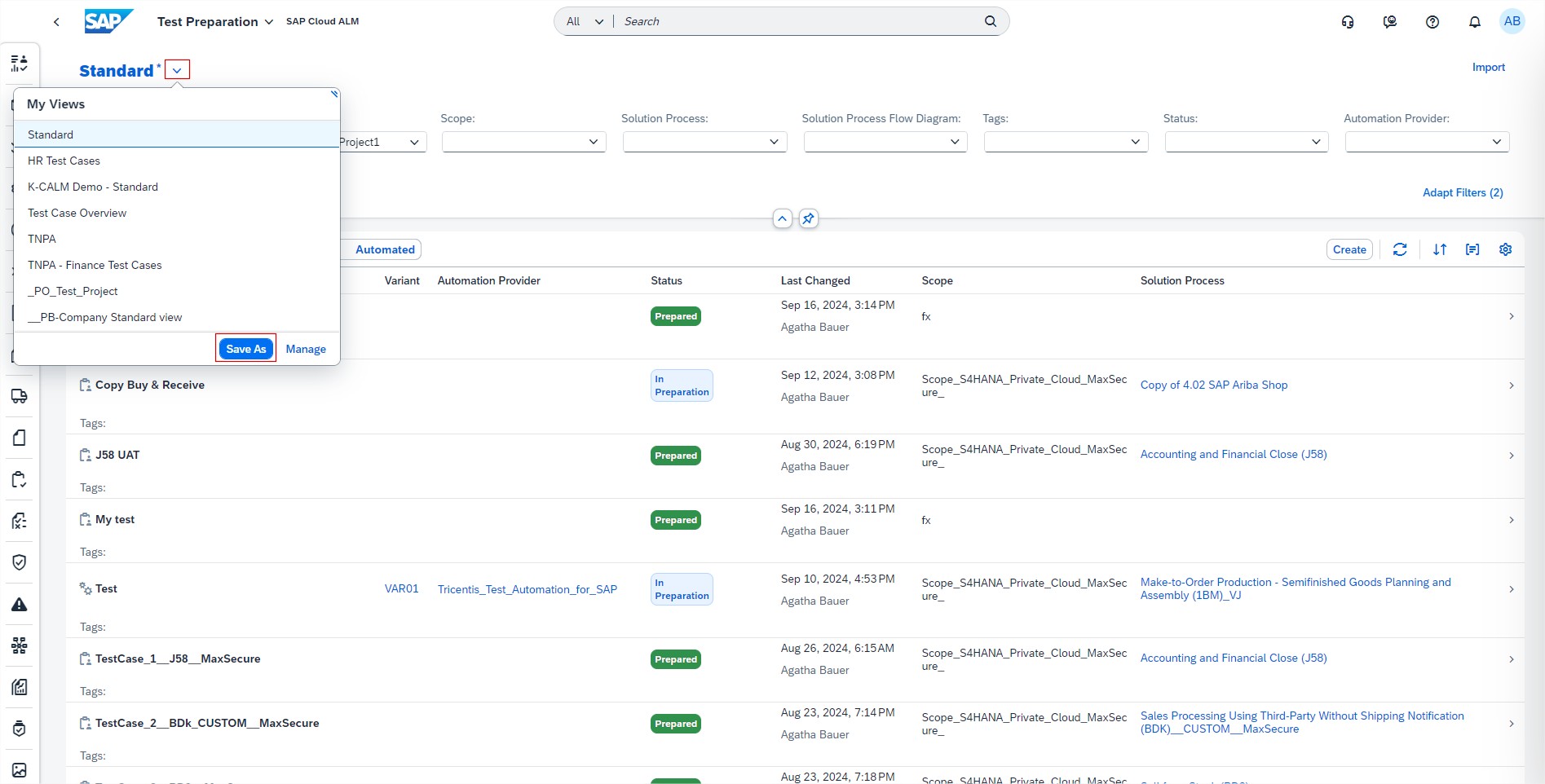
In Test Plans it’s now possible to only delete test plans that are in status In Preparation. It helps to prevent accidental loss of test results. To delete a test plan that is already In Testing or Finished, it’s necessary to change its status first.
Remember that it’s strongly advised against deleting test plans after testing has started because all test runs, and test results associated with the test plan will be deleted as well.

Operations
Synthetic User Monitoring also now supports Event Action Variants to sum up the event action settings and save time on configuration. Save an event configuration as an event action variant. Then use the variant to replace the current event configuration of another business service with the variant.
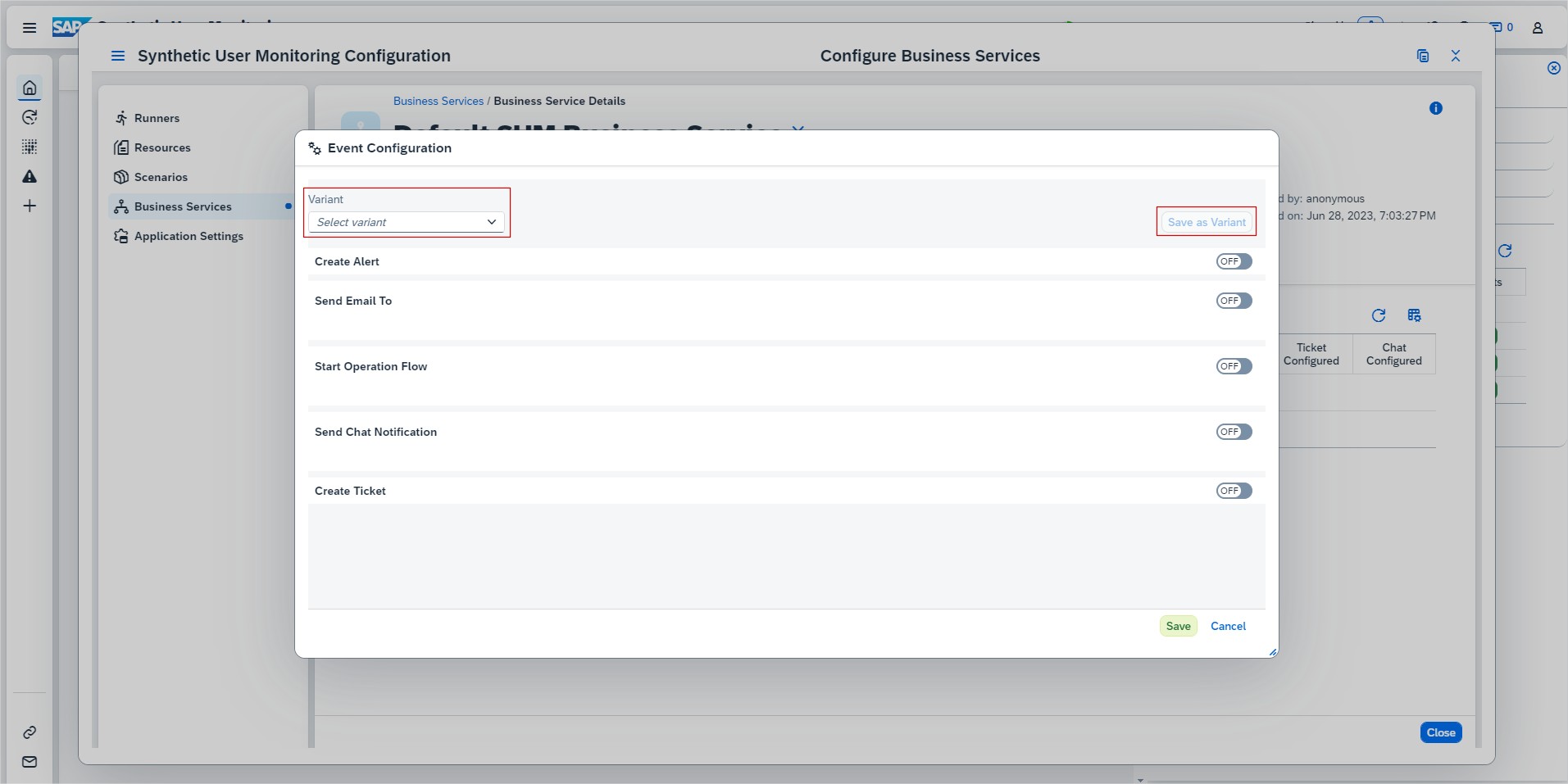
These Event Action Variants can also be managed in the Intelligent Event Processing app.
Keep in mind that when using variants, it’s not anymore possible to edit the event configuration directly. Instead, the configuration is connected to the variant, which means that if the variant definition is changed, the event configurations connected to the variant will automatically use these changes.
Integration & Exception Monitoring has a new monitoring category for SAP Project and Resource Management, resource management capability providing us with detailed status overview of the incoming and outgoing Transactional Messages.
Intelligent Event Processing has enhanced Event Payloads by providing Landscape information of the managed component in the payload. The landscape information includes details such as customer name, customer ID, tenant ID, data-center, role, and so on. These details provide more context about the managed component of the event situation.
